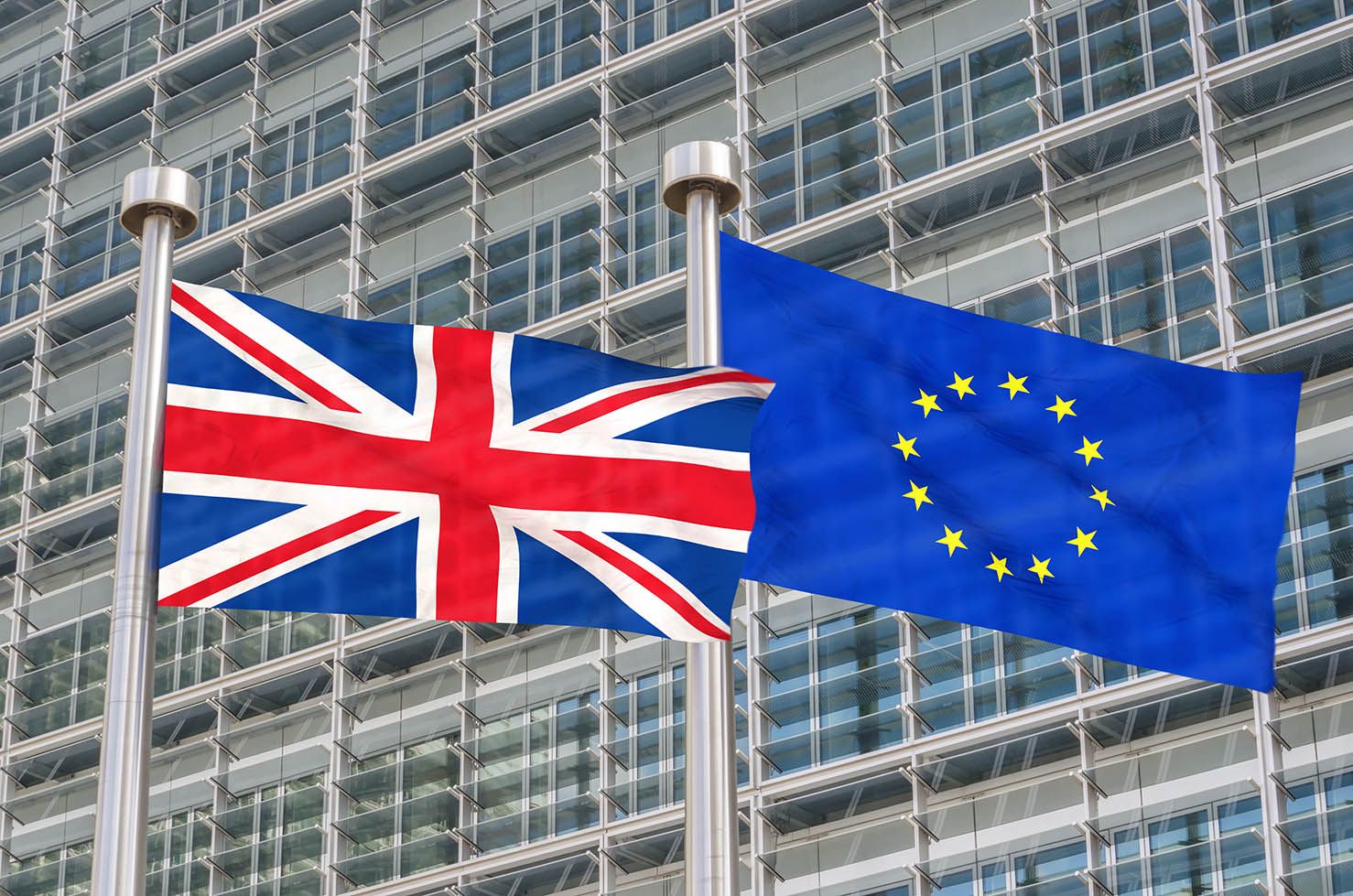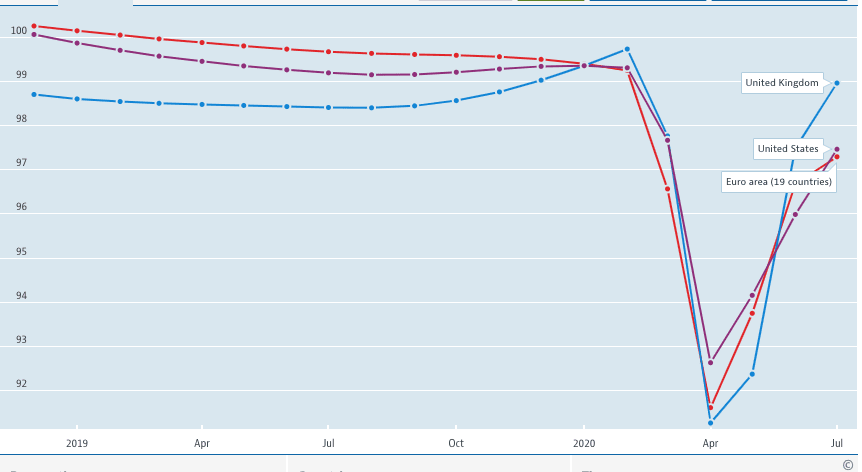Pound Sterling vs. Euro Week Ahead Forecast: Positive Brexit Trade Deal Talks Could Open Door to 1.12 says Analyst
- Brexit trade deal talks begin once more
- Flash PMIs form main economic event
- Technicals suggest GBP/EUR likely to remain consolidative

Image © Adobe Images
- GBP/EUR spot rate: 1.1045
- Bank transfer rates (indicative guide): 1.0760-1.0840
- FX specialist transfer rates (indicative guide): 1.0860-1.0950
- For more information on market leading rates, please see here
The British Pound starts the new week softer against both the Dollar and Euro but we would expect a potentially volatile week for Sterling given Brexit trade negotiations commence once more while the release of flash PMI data at the end of the week will be eagerly anticipated for a foreign exchange market obsessed with the speed of the post-covid economic recovery.
The Pound-to-Euro exchange rate is presently quoted at 1.1038, down 0.10% on where it started the day as Sterling builds on the previous week's 0.25% loss. However, from a technical perspective this is not a market going anywhere fast soon and it has a consolidative flavour to it according to Karen Jones, Team Head of FICC Technical Analysis Research at Commerzbank.
Jones says the GBP/EUR exchange rate is "again probing" the 55 day Moving Average at 1.1052, with the exchange rate looking more or less "side lined" following days of inconclusive direction. Jones is looking for further consolidation in the GBP/EUR pair, but is unable to rule out further strength in Sterling that could see the GBP/EUR rally back to the July high at 1.1196.
Rallies in GBP/EUR "remain shallow", but from a strategic perspective Commerzbank will now attempt to sell the Pound into strength suggesting if anything, the Euro remains favoured.
The exchange rate will find technical support at 1.0999 and then 1.0954 ahead of 1.0896 according to Jones' analysis (note analysis is conducted in EUR/GBP, and our GBP/EUR targets as close approximations of the EUR/GBP levels stated in the research).
But a move below 1.0888 would trigger a fall to the 1.0743 the 2017 low and 1.0726. "This is the location of the 78.6% Fibonacci retracement," says Jones, noting it forms a "formidable" amount of support for Sterling "and is expected to hold the initial test."
Above: GBP/EUR's potential downside targets. If you have GBP or EUR international payment requirements and would like to lock in current levels to protect against further losses, we would recommend speaking to our partners Global Reach for assistance, please see more here.
How the Pound ends the week will likely depend on Friday's briefing from EU and UK negotiators following this week's trade negotiations. The two sides meet on Tuesday in Brussels and are expected to attempt to iron out further differences between the two sides.
We don't expect any breakthrough on the major issues but instead the two sides to make further progress towards such an outcome. However, any unexpected successes or obvious break down in tone would likely inject some volatility into the pair.
For now, markets continue to assume a deal will be reached, which should ultimately keep Sterling somewhat supported.
Irish premier Micheál Martin said last week that Boris Johnson had shown a "genuine desire" to finalise a trade deal, and that the did not want to compound the coronavirus crisis with a "no deal" economic shock.
"Driven mostly by risk sentiment recently, the Pound enjoyed a wave of increased demand ... following optimistic comments by Ireland’s PM, Micheál Martin, regarding a Brexit deal after a meeting with UK PM Boris Johnson," says George Vessey, UK Currency Strategist at Western Union Business Solutions.
Martin added both the EU and UK had identified a "landing zone" for a deal to be agreed.
"This sparked a rush of demand for Sterling. Brexit talks resume (this) week and have the potential to increase Sterling volatility. If progress is made and hints of an agreement are unveiled, then sterling should strengthen, and this might be the catalyst to drive GBP/USD towards and beyond $1.32 and GBP/EUR towards €1.12," says Vessey.
UK chief negotiator David Frost meanwhile said last Thursday that a Brexit agreement can be reached with the European Union in September.
The suggestion by Frost that a deal is possible by September suggests the UK are looking to maintain pressure on the EU this week. However, most Brussels watchers are seeing a trade deal as only being likely in October as this is when the next scheduled European Council meeting of European leaders takes place.
The EU are notorious for tending to only reach big decisions at such summits, and hence why October is widely held to be the likely deadline for progress.
"The negotiations for a post-Brexit deal have apparently been more successful behind closed doors than on the main stage. Markets seem, however, quite relaxed for the time being. We do currently not see any Brexit obstacles on the horizon that could derail the GBP," says Thomas Flury, Strategist at UBS.
However, Vessey warns if talks breakdown and the deadlock persists, :then sterling traders may take profit on the recent GBP/USD ascent, which could drag the pair back under the $1.30 handle, with $1.2960 being the next key support, which would then open the door to $1.27. GBP/EUR could tumble under €1.10."
Data to Watch this Week
The main data release for both the Euro and Pound in the week ahead ahead are the flash PMIs for August which will give a sense of how the respective recoveries in the Eurozone and UK are progressing.
"Activity likely rose gradually through August as most countries continued to ease up COVID restrictions (local shutdowns excepted). We see upside risks and expect small gains across most key PMI measures, indicating recovery, but still at a relatively subdued pace," says a note from TD Securities.
Eurozone PMI data are out at 09:00 BST on Friday, while the UK PMIs are out at 09:30.
With relative economic performance being an increasingly important factor for foreign exchange markets to consider, a beat or miss of consensus forecasts could influence direction in the Euro and Pound.
Eurozone Manufacturing PMI is forecast at 53.0, up from the previous month's 51.8.
Services PMI is forecast 54.2, up slightly on the previous month's 54.7 while the composite PMI - which combines the two but weighs them according to their respective share of economic activity - is forecast at 54.7, down slightly on July's 54.9.
The UK Services PMI is forecast at 57, up from the previous month's 56.5 while the Manufacturing PMI is forecast at 53.6, up from July's 53.3. The Composite PMI is expected at 56.6, down on the previous month's 57.
How the UK recovery compares to the recoveries of other economies matters when it comes to exchange rates, as we are in a world where economic outperformance is beginning to matter again.
The OECD gathers timely economic data, such as PMIs, from the world's largest economies and compiles it into its Composite Leading Indicator which gives a view of major turning points in an economic cycle and allows us to see how economies are performing relative to each other. The below shoes the Composite Leading Indicators for the UK, US and Eurozone:
The immediate takeaway is the UK economic recovery has started to outperform that of the Eurozone and the U.S., and should this be picked up by official data in coming weeks and months we could well see this translate into more sustained Sterling advances.
While there is a bounce back underway according to some data points, there are however other data which show the challenges that lie ahead, including:
- a very gradual recovery in terms of movement in London which is only 50% back to normal
- box office revenues only 3% of what they normally are
- public transport usage well below normal at around 30% of potential
- Heathrow remains almost 90% down relative to last year
- Job adverts 50% of their 2019 levels
- Searches for redundancy hit their highest in July







